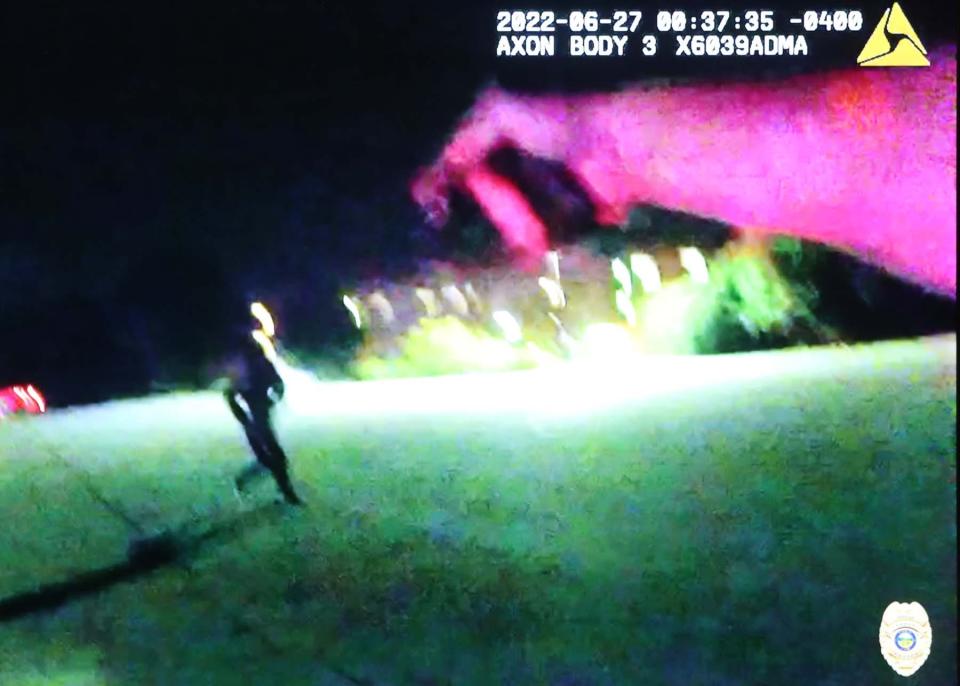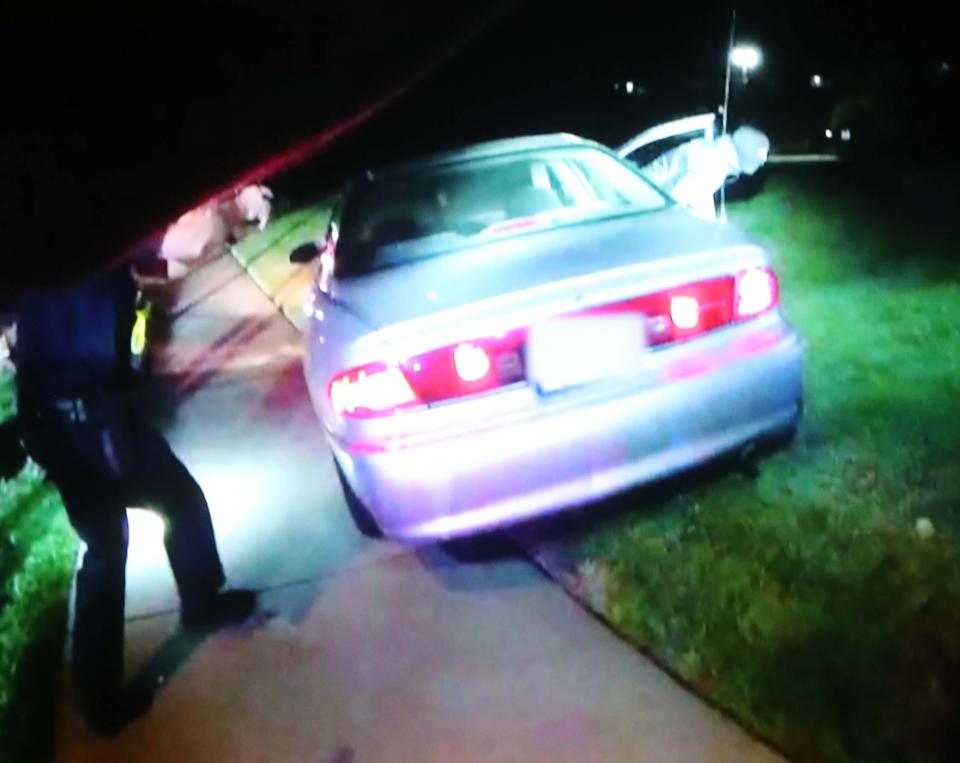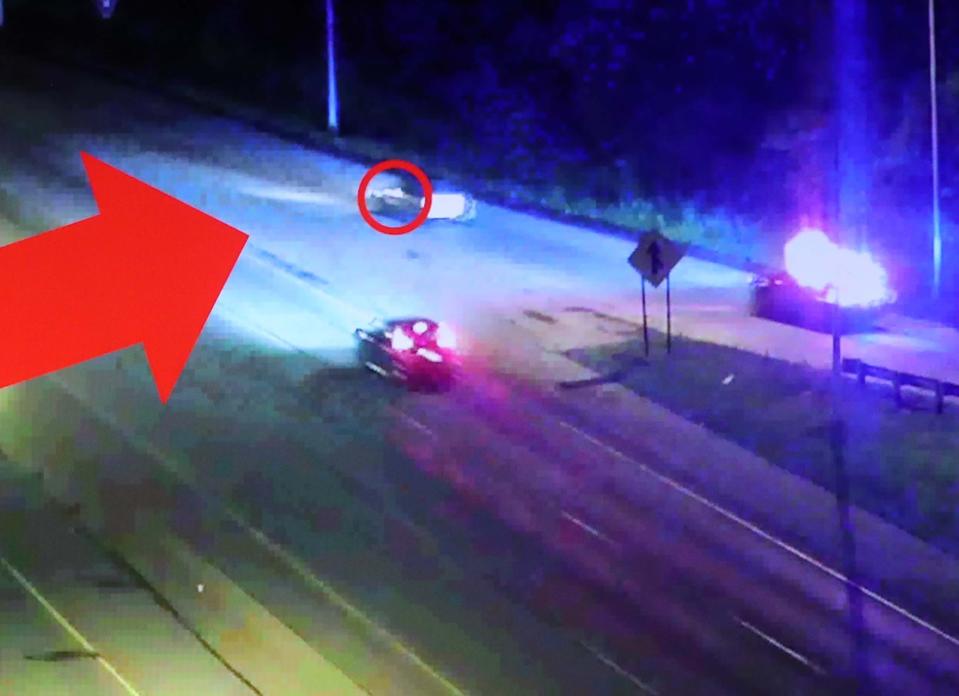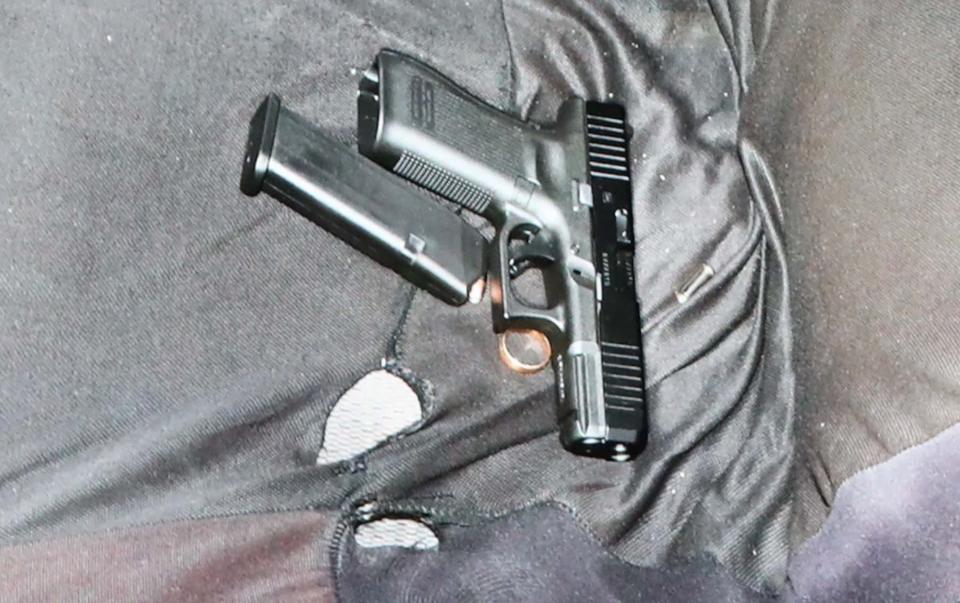What we still don't know in the Akron police killing of Jayland Walker
Beginning April 10, state prosecutors are expected to walk a grand jury through all the evidence in the June 27 police killing of Jayland Walker.
In a ski mask after allegedly firing a single shot during a cross-town car chase, the 25-year-old DoorDash driver ditched his silver Buick on Wilbeth Road and ran, unarmed, into a parking lot. He spun around and was struck 46 times by eight uniformed Akron officers.
The state will post online all documents regarding the criminal investigation into the deadly use of force after the grand jury makes its decision. Until then, some big questions remain unanswered.
Why was Walker, a DoorDash driver with no criminal record, driving through North Hill that summer night? What's the meaning of the ring police found on his front seat? Why did Walker run, perhaps two nights in a row, from police? Does the shell casing police say they recovered on the highway match the gun found in Walker's car? Why did some officers unload their clips, striking Walker with dozens of bullets after he hit the ground?
And how will the public process the grand jury's decision to indict or not indict Akron police in this case?
Here's what we still don't know now eight months later.

Akron police shooting death: Gruesome videos, Jayland Walker's motions intensify debate; attorney disputes city's claims
What's the evidence?
Walker's death, the third fatal encounter with officers since Police Chief Steve Mylett arrived in Akron in 2021, marked the first time an Akron police chief called in the state to lead a routine criminal investigation of deadly police force.
Through records requests and letters from our attorneys, the Beacon Journal has received and reviewed 12 hours and 20 minutes of police footage from 50 files generated by body cameras worn by officers that night. Nearly every video is redacted, at least partially, to conceal the identities of officers involved, first aid administered to Walker or other sensitive information.
The Beacon Journal also examined 245 pages of redacted personnel files, 128 pages of city emails referencing Walker, old police reports involving officers who can reasonably be identified as among the eight who fired at Walker and 10 pages of field notes from patrol units that arrived within seconds or minutes of the shooting.
In addition to all this, investigators with the Ohio Bureau of Criminal Investigation have taken statements from witnesses, including the officers, and processed evidenced tagged at the scene.
Personnel files: Here's what new records tell us about 8 Akron officers who fatally shot Jayland Walker
Lawsuit filed:Beacon Journal asks Ohio Supreme Court to order release of Akron police records
What was the (exact) reason for the traffic stop?
Around 12:30 a.m. June 27, Car 24 radioed in a "39" in reference to an attempted traffic stop on Tallmadge Avenue a half-mile west of state Route 8 in Akron's North Hill neighborhood. Less than a minute later, the officer updates the situation as a "signal 5" emergency or vehicle pursuit.
Seven seconds of shooting: What 13 police bodycam videos show in Jayland Walker's death
He gives the reason for the stop as an "equipment and traffic violation," perhaps for the same reasons a New Franklin officer tried to stop the same vehicle the night before for a burnt-out license plate light and broken taillight.
Mylett said BCI's investigation will explain further.
When did officer first spot Walker?
FOP President Clay Cozart has said officers were aware of the incident in New Franklin when they first spotted Walker's vehicle earlier that night but chose not to stop or pursue him.

“(They) allowed that vehicle to enter Route 8 and let that vehicle go, not wanting to stop him for just that information and just the equipment violation,” Cozart told News 5 Cleveland in mid-July.
If this happened and the car that later stopped Walker was involved, there's no record in the audio files provided by the city. And Cozart has declined to comment further.
The audio files, which have not been previously reported, show that Car 24 was patrolling Tallmadge Avenue in the hour before trying to stop Walker's vehicle. The unit actually pulled over another vehicle, a Black Range Rover, at 11:40 p.m.
But there's no other radio chatter of a stop or attempted stop until Car 24 calls in Walker's vehicle at 12:30 a.m.
How many shots were fired, and why so many?
"We do not know the exact number of rounds that were fired," Mylett said days after the shooting while addressing media speculation that as many as 95 rounds were fired within seven seconds.
BCI investigations of officer-involved shootings typically detail the number of rounds discharged and which officers fired them. A coroner's report indicated 46 wounds to Walker's body. In the body camera video, some officers empty their clips while others stop shooting after only a few shots.
Two additional officers arrive just as the shooting ends. Their guns are drawn but they do not fire.
The exact number of shots fired, though, is still publicly unknown.
While Walker family attorneys have said "we don't treat animals that way," experts who train proper use of force say officers are trained to deliver force until the threat is neutralized. And it's the totality of the circumstances viewed through the legal doctrine of what the officers in that moment perceived as reasonably threatening that matters in court.
As use of force trainer and Wellington Chief of Police Tim Barfield told the Beacon Journal, troubling body-worn camera footage of Walker's death can't capture the fear officers conveyed to investigators in the case. And that fear has been enough, according to cases in Akron and America that have hinged on U.S. Supreme Court decision in the past 33 years, to legally justify deadly force.
Akron police shooting: Here's what Akron police were saying and hearing before shooting Jayland Walker
Excessive or justified force?
Walker family attorney Bobby DiCello has maintained that as many as 60 or more shots at an unarmed man was "absolutely excessive" and "absolutely unreasonable."
Law officer training on the use of deadly force, as well as administrative and criminal investigations into officer-involved shootings, typically rely on two U.S. Supreme Court cases: the 1985 Tennessee v. Garner case and the 1989 Graham v. Connor case. Together, the rulings require officers to act in an "objectively reasonable manner to defend" themselves, fellow officers and the public when presented with a threat that, in that moment and not in hindsight, "a reasonable person would consider likely to cause death or serious bodily harm."
Seven seconds of shooting: What 13 police bodycam videos show in Jayland Walker's death
Officers, including dozens in Akron in the past two decades, have avoided criminal charges for killing or injuring people, not only to neutralize threats, but to prevent people who commit felonies from escaping.
"I hope that we have some justice," said DeJournett, "and that we address the issues at hand. We pretty much all saw what happened."
What will Akron's internal review reveal?
After Walker died, U.S. Rep. Shontel Brown and the NAACP asked the U.S. Department of Justice to monitor the investigation and take any necessary action based upon its findings. DOJ typically intervenes, including twice in Cleveland in recent years, where there's a pattern of bad policing or civil rights abuses.
DOJ has not announced direct involvement in the Walker investigation or with Akron police.
While waiting on BCI and the grand jury processes to conclude, Akron's Office of Professional Standards and Accountability has started an internal review focused less on potentially criminal aspects of the case and more on whether officers violated any department policy. But that internal investigation won't commence in earnest until state investigators, special prosecutors and the grand jury have done their parts.
The city's police auditor, who said he doesn't expect to see anything until after the grand jury votes, will get that internal review when completed in the weeks or months that follow.
Situational awareness and discipline, including whether a police supervisor mustered a proportional response to the threat at hand, could be part of that review, said Matthew Stinson, a professor in the criminal justice program at Bowling Green State University.

Also under review would be the appropriateness of having 10 cars chase Walker, who drove past one roadblock and was approaching a second on Wilbeth when he ditched his rolling car.
And, before Walker allegedly committed a felony by discharging a firearm early in the chase, there's the question of whether the pursuit was warranted from the start.
Under the Akron Police Department’s Vehicle Pursuit Procedure, which was established Jan. 31, 2020, initiating a chase “must be based on the pursuing officer’s reasonable belief that the immediate danger to the officer and the public created by the pursuit is less than the immediate or potential danger to the public should the suspect remain at large.”
Any answers in Walker's car?
Police found what appeared to be a wedding band and an unloaded handgun beside a loaded magazine on the driver's seat of Walker's car.
Where the ring came from remains a mystery. Walker was engaged to be married to a woman who'd died in a car crash a month earlier.
Police also say that, after the shooting, investigators went to where the car chase began. Near the Route 8 South ramp off Tallmadge Avenue, where Akron police say a state highway maintenance camera caught a flash from Walker's driver side window just as a "pop" could be heard on the body-worn camera footage from inside Car 24, investigators found a shell casing consistent with the handgun.

Did Walker think police might back off if they heard gunfire? Was he clearing the chamber of his gun after removing the magazine? Was it an accidental or intentional discharge?
These questions may never be answered. But Walker appears to have been within his rights to have the gun in his car under a recent change in Ohio law, though discharging a firearm is clearly a violation of the law.
DiCello has said Walker's "car is intact and has no bullet holes." The front windows were down when police secured Walker's vehicle after it rolled into a church across the street from where he was killed.
The BCI reports should explain more about the casing, the alleged shot and the origin of the gun.
What happened in the last month of Walker’s life?
Walker’s world was upended May 28 when Jaymeisha Beasley, his fiancee, was killed on Interstate 71 north of Cincinnati while traveling with her family.
Attorney DiCello said Walker "was very saddened by that."
But Walker's family noticed nothing unusual in the days leading up to his death. He was helping his grandmother put chairs on her porch the day before he died, exhibiting no behavior that "scared the family," DiCello said. "He wasn't talking about things that were bizarre. He wasn't writing out journals or making veiled threats of any kind."
Walker was working for DoorDash during this time in his life. A red DoorDash bag can be seen on the passenger seat of his car in police-worn body camera footage. But it is not clear whether he was delivering food that night.
Who are the officers who shot Walker?
Before this incident, the Akron Beacon Journal pressed the city to release the names of four other officers involved in the last two fatal shootings, which occurred in the previous six months.
After the newspaper brought in legal counsel, the city did provide the personnel files of those four officers from the two prior incidents and the files for the eight officers who shot Walker
But the city redacted all their names, citing threats to the officers' safety.
On a website that's since been taken down, activists published a list of eight names, including some that the Beacon Journal has independently verified as belonging to the eight officers who shot Walker. But the city has not verified these names and the police department won't confirm the authenticity of the publicly released list.
Mylett maintains that he has no intention of releasing the names with the BCI investigation still active and threats against Akron officers made after Walker's death.
And BCI won't be naming the officers if it follows the same path its taken in other recent reviews of officer-involved shootings in Akron and elsewhere. Though not taking the lead and merely assisting with the collection and analysis of crime scene evidence, BCI released reports recently on a Dec. 23, 2021, fatal officer shooting in Akron. But BCI said its practice is to name officers only if local police departments name them.
And Akron has not.
Reach reporter Doug Livingston at dlivignston@thebeaconjournal.com or 330-996-3792.
Akron FOP statement about police shooting: Akron police union believes officers were 'justified' in shooting Jayland Walker
This article originally appeared on Akron Beacon Journal: What we know 6 months after Akron police killed Jayland Walker

